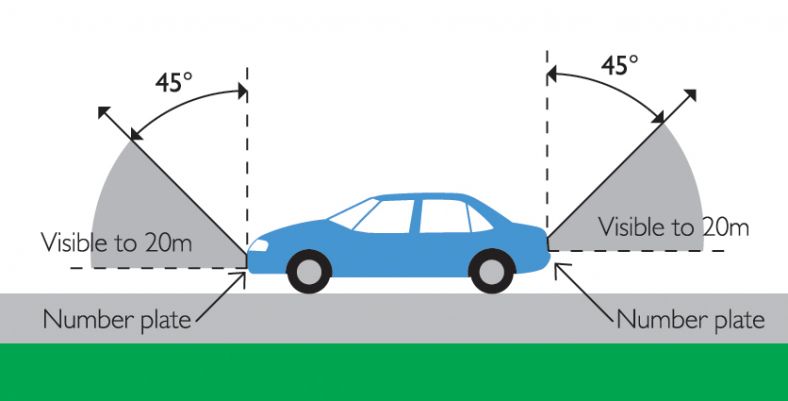Displaying number plates
Number plates need to be visible from up to 20 metres away. Find out how to display your number and auxiliary plates.
Number plate requirements
It is an offence for drivers and registered operators of vehicles if its number plates are not fitted properly, obscured, defaced or otherwise not legible. Search demerit point offences for fines related to number plate offences.
These requirements apply to auxiliary number plates, except being ‘permanently fitted to vehicles’. Auxiliary number plates can be displayed on a rack, a panel, or the item carried or towed.
Number plate rules are outlined in detail in Road Transport (Vehicle Registration) Regulation 2017.
Number plate visibility
Number plates must be permanently fitted to vehicles in an upright position and parallel to the vehicle’s axles, and not more than 1.3 metres above ground level.
Number plates must not be obscured, defaced or otherwise not legible.
The numbers on number plates must be clearly visible from any point that is up to 20 metres from the number plate, and within an arc of 45 degrees from the surface of the number plate above or to either side of the vehicle.


Number plates must be readable from a distance of at least 20m.
Number plate covers must be clear, clean, untinted and flat over the entire surface, and have no reflective or other characteristics that would prevent the successful operation of traffic offence detection devices.
For vehicles, 1 number plate must be fitted to the front of the vehicle and another to its rear. If different in size, the larger number plate must be fitted to its rear.
For motorcycles or trailers, 1 number plate must be fitted to its rear.
Number plate lights
At least 1 number plate light must be fitted to the rear of vehicles. When on, number plate lights must illuminate number plates on the rear of vehicles with white light, so the numbers can be read at night 20 metres from the vehicle’s rear.
Number plate lights must not project white light to the rear of vehicles, and must not obscure the numbers on number plates.
Number plate lights must be wired to come on, and stay on, when the vehicle’s parking lights, headlights or tail lights are on.
Auxiliary plates
You need auxiliary plates if the caravan, trailer, bike rack or vehicle you're towing covers your rear number plate.
Auxiliary plates are marked with 'NSW – Auxiliary' and have black characters with a white background. They must have the same character combination as your number plates.
Bike rack number plates issued before 2011 are acceptable.
You can be fined for not displaying auxiliary plates clearly and not using a working rear number plate light.
Order auxiliary plates in person at a service centre, on the myPlates website or by calling 13 77 88.
Homemade auxiliary plates
You can only create your own auxiliary plates if all these conditions are met:
- the towed vehicle doesn’t need registration and is not legally obliged to have a number plate (for example, certain types of agricultural equipment)
- the number plate of the towing vehicle is obscured by the towed vehicle
- the plate size and lettering is clearly visible from up to 20 metres away and 45 degrees above and on either side of the vehicle (must be compliant with cl.25 of the Road Transport (Vehicle Registration) Regulation 2017).